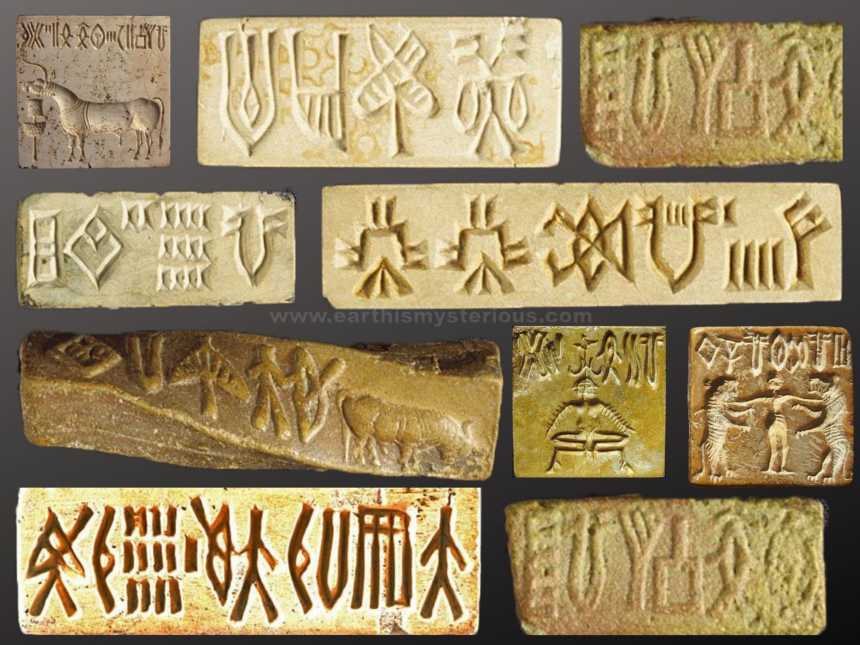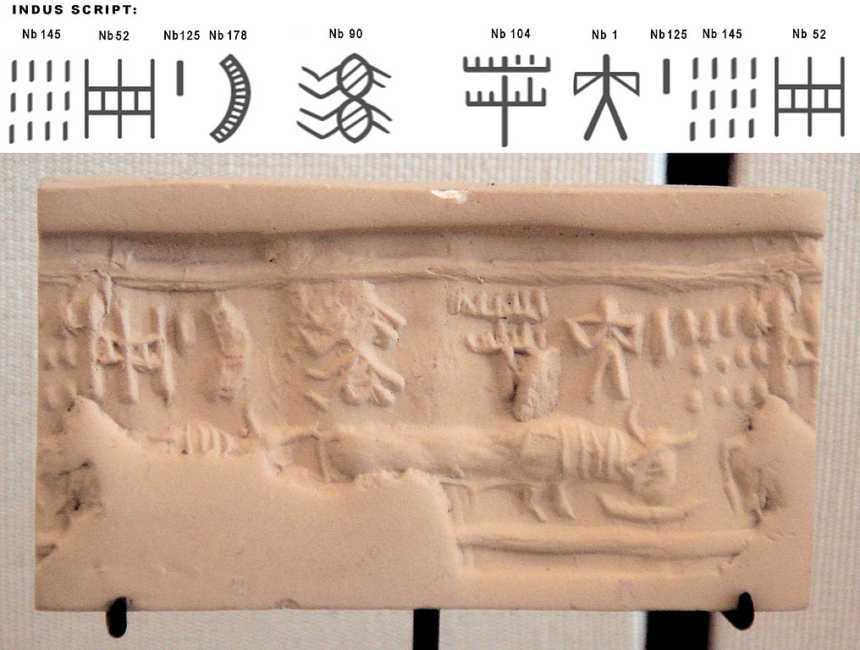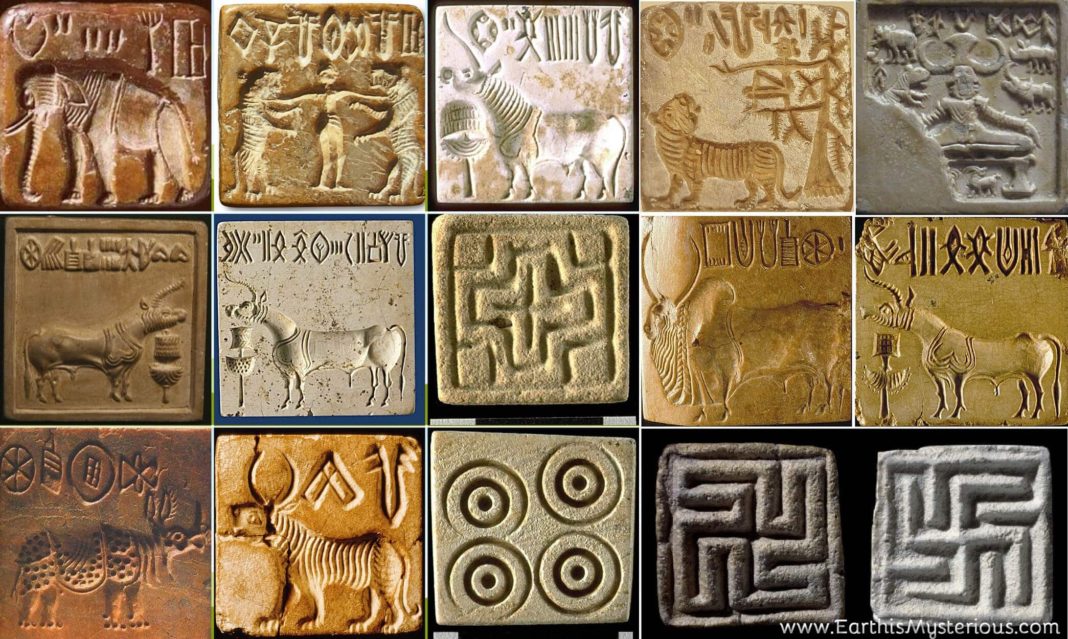Today, when we’ve unlocked the secrets of Egyptian hieroglyphs, Maya writing and hosts of far lesser known scripts, it seems as though there’s nothing left for enterprising epigraphers. Fear not, for there are actually a number of ancient writing systems still to be cracked. They include texts of the Olmec and Zapotec (Mesoamerican cultures preceding the Classic Maya), Proto-Elamite (writings of the earliest civilization of present-day Iran) and Rongorongo of Easter Island.
But if it’s fame you’re after there’s no better challenge than the symbols of the Indus Valley Civilization, which flourished some 5,000 years ago in present-day northwest India and Pakistan.
Since 2004, there’s even been a standing $10,000 prize for anyone who discovers an Indus text over 50 characters, offered by an anonymous donor and valid through the lifetime of historian Steve Farmer, a vocal opponent of the view that the Indus civilization was literate.
That Lesser-known Great Civilization
4,500 years ago the Indus Valley civilization held an estimated one million people spread over a Texas-sized region, twice the area of contemporary Egypt or Mesopotamia. Its largest excavated cities, Rakhigarhi, Harappa, Mohenjo-daro, Lothal, exhibit levels urban planning that rival modern standards, including grid-like streets, water management and the oldest toilets. Yet there’s no suggestion of royal, religious or military might — no grand palaces, temples or defensive fortifications. And after flourishing between 2600-1900 BC, it’s unclear what happened to the Indus Valley people, or if any populations today can count themselves as their descendants.
In the 1920s, when the Harappan civilization first came into limelight owing to the efforts of the then leading archaeologists of British and Indian origin, it was little expected that the civilization would prove to be a mystery for a such a long time.
The excavations from various sites revealed a highly advanced civilization with large well-planned brick-laid fortified cities, advanced drainage system, houses with many rooms and sometimes double-storeyed, separate bathroom and toilets, and a sophisticated system of interconnected tanks and reservoirs for elaborate water management. However, despite the thousands of archaeological artifacts excavated from more than a thousand settlements, a wholesome perspective of the civilization still remains elusive. This is because unlike the Mayan scripts and Egyptian hieroglyphs, Harappan scripts are still undecipherable.
In fact, we know almost nothing. “If you were to ask an archaeologist, they would not be able to tell you where the Indus Civilization came from with certainty, or how it ended, or what they were doing when they were around,” says epigrapher Bryan Wells. To us, the Indus Civilization is as mysterious as its symbols.

Ancient Indus script
Several thousand Indus texts have been discovered, mostly from Dholavira, Harappa and Mohenjo-daro, but also in far-flung lands of trading partners along the Persian Gulf and in Mesopotamia. The majority symbols are seen engraved on small stone seals (one-inch square), above images of animals (such as bull, elephant, or unicorns) and humans. Fewer inscriptions are found on clay tablets, pottery and metal objects.
While typically most inscriptions are 4-5 symbols long and tiny, there is one that is a 17 symbols long inscription on a surface less than 1 inch. It is also for this reason that some scholars contend that the symbols do not encode true writing. Most of the other ancient civilizations that have a true writing system show long writings, often with more than 100 characters. On the other hand, the longest Harappan script shows less than 30 characters.
Slightly over 400 basic signs have been identified as part of the Indus Script. Only 31 of these signs occur over 100 times, while the rest were not used regularly. This leads researchers to believe that a large amount of the Indus Script was actually written on perishable materials, such as palm leaves or birch, which did not survive the destruction of time. Some researchers have argued that the roughly 400 symbols can actually be reduced to 39 elementary signs, the rest being merely variations of styles and differences between scribes.

Writing or Nonlinguistic symbols?
While the general theories believe these inscriptions show the Harappans to be literate, there is another line of thought propounded by Farmer, Sproat, and Witzel in 2004, which claim that the Harappan symbols do not represent a language. This line of thought instead believes that the symbols look more like the non-linguistic systems used in various cultures to symbolize their deities, sects, clans, religious codes, and family names.
There is also a belief that the Harappan symbols were perhaps exclusively used for economic transactions, and the seals and tablets with the signs found at various sites are comparable to the structured messages found on tokens, currencies, and stamps; and were used for controlling commercial transactions with other contemporary civilizations of the world.
Thus, the signs could also be more of a formula like texts encoding certain fixed data, instead being a free-flowing narrative. However, this theory fails to explain the presence of the symbols on objects used for various rituals, which were mass-produced.
In a 2009 study conducted by Rajesh P N Rao, the Harappan symbol patterns were compared to different forms of linguistic and non-linguistic systems, which included highly ordered programming language codes and randomly ordered DNA codes. It was found that the Harappan pattern resembled spoken words, thus supporting the theory that the symbols indeed stood for a yet to be deciphered language.
More recently IT specialists have researched further on the subject using different approaches. In one such approach it has been analysed as how random or ordered the symbols are within a text. This approach, referred to as conditional entropy, concluded that Harrapan inscriptions are similar to patterns known in writing systems, which range between the disordered codes (such as DNA) and ordered sequences (such as computer codes). Other methods that are based on prabability theories and statistics have also concluded that Harappan scripts depict characteristics of a true writing.
Attempts at decipherment
While our understanding of the Indus script remains minimal, it’s certainly not for lack of trying. “It’s often called the most deciphered script because there are around 100 decipherments,” says Wells, “but of course nobody likes any of them.” Many people have claimed to have cracked the script, often asserting it’s a precursor to a later language, but none of the decodings have held up.
In the 1990s and after, many Indian authors — including some academics — have claimed that the Indus script can be read in a form of early Sanskrit, the ancestral language of most north Indian languages including Hindi. In doing so, they support the controversial views of India’s Hindu nationalist politicians that there has been a continuous, Sanskrit-speaking, Indian identity since the third millennium bc.
Whatever their differences, all Indus researchers agree that there is no consensus on the meaning of the script. There are three main problems.
- First, no firm information is available about its underlying language. Was this an ancestor of Sanskrit or Dravidian, or of some other Indian language family, such as Munda, or was it a language that has disappeared? Linear B was deciphered because the tablets turned out to be in an archaic form of Greek; Mayan glyphs because Mayan languages are still spoken.
- Second, no names of Indus rulers or personages are known from myths or historical records: no equivalents of Rameses or Ptolemy, who were known to hieroglyphic decipherers from records of ancient Egypt available in Greek.
- Third, there is, as yet, no Indus bilingual inscription comparable to the Rosetta Stone (written in Egyptian and Greek). It is conceivable that such a treasure may exist in Mesopotamia, given its trade links with the Indus civilization. The Mayan decipherment started in 1876 using a sixteenth-century Spanish manuscript that recorded a discussion in colonial Yucatan between a Spanish priest and a Yucatec Mayan-speaking elder about ancient Mayan writing.

What is it known about the indus script?
Although decipherment of the Indus Script has not been possible yet, the majority of the scholars who have studied it agree on a number of points:
- The Indus Script was generally written from right to left. This is the case in most examples found, but there are some exceptions where the writing is bidirectional, which means that the direction of the writing is in one direction on one line but in the opposite direction on the next line.
- The representation of certain numerical values has been identified. A single unit was represented by a downward stroke, while semicircles were used for units of ten.
- The Indus Script combined both word signs and symbols with phonetic value. This type of writing system is known as “logo-syllabic”, where some symbols express ideas or words while others represent sounds.

On the ground in India and Pakistan, more inscriptions continue to be discovered — although not, as yet, any texts longer than 26 characters. Unfortunately, less than 10% of the known Indus sites have been excavated. The difficulty — apart from funding — is the politically troubled nature of the region. Many of the most promising unexcavated sites lie in the Pakistani desert region of Cholistan near the tense border with India. One such is the city of Ganweriwala, discovered in the 1970s and apparently comparable in size with Mohenjo-daro and Harappa.
If these sites, and some others within Pakistan and India, were to be excavated, there seems a reasonable prospect of a widely accepted, if incomplete, decipherment of the Indus script. It took more than a century to decipher the less challenging Mayan script, following several false starts, hiatuses and extensive excavation throughout the twentieth century. Indus-script decipherers have been on the much barer trail — older by two millennia — for less than a century, and excavation of Indus sites in Pakistan has stagnated in recent decades.
Thus, decoding the Harappan scripts need more research, unless some multilingual inscription like the Rosetta stone pops up in some excavation site; or perhaps the genome testing of these prehistoric people may shed some light on their ancestry that may help us to understand their language. Until then, the $10,000 prize money stands open for anyone ready to face the challenge of decoding the voice of the Harappans.


